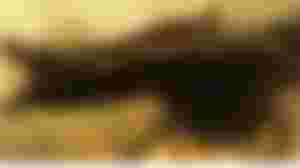
Friends, you must have heard the story of the fictional dragon in the mythological history of China. Have you ever seen a dragon movie and also learned about dragons in many cartoons?
Well, the dragon you know about is a very wicked, fierce and huge monster, isn't it?
But you know, there's a dragon with a very calm soft nature! Named "Dragon of the Sea"
As beautiful as it looks, its varied behavior.
You know, this dragon has no teeth. There is no stomach to digest food. What a strange no-no!
Sea-dragons live in the calm deep sea waters of Australia. At first glance, the C-Dragon is an animal. At first glance, it may look like a lot of aquatic plants or marine algae. It is very quiet. It can walk only 150 meters per hour and can wait patiently for food for up to 6 hours in one place. They can lay 150 to 250 eggs and you will be surprised to know one thing that their eggs Walks around with the heart.
C-Dragon eats small shrimp and small aquatic animals. They are named "Dragon of the Sea" because they look like fictional dragons.
Its scientific name is phycodurus eques.
Little friend, have you ever played hide-and-seek? The "Sea of Dragons" has a feature just like you hide yourself.
The sea-dragon can change the color of its body when it is orange, blue and sometimes green and because of its lurking properties it is called Leafy seadragon.
There is also another dragon called WD Sea Dragon.
Come on, then this time we don't see in the picture.

In Eastern culture, dragons are seen as a very intelligent being, with absolute control over the sea and water. In addition to this, there is a tradition of seeing the dragon as very kind to the common people, whose influence removes all ill effects.
In Western culture, the dragon has come again in the complete opposite form. Here he is a gigantic, terrifying creature that, whether killed or destroyed, is intoxicated all day long. He lives in a remote, dark, dangerous place where there is no end to human suffering. But these dragons did a job. They were guardians of huge amounts of property.
No matter what the culture of the East or the West, the dragon did not grow any wings until the Middle Ages! That is, until then the storytellers did not spread the wings of the dragon. From this time on, Western dragons have been seen to be winged, while Eastern dragons have remained wingless.
There is no shortage of legends about dragons. Let's not talk about the blood of this giant animal. According to various legends, if someone strikes someone with a knife or sword dipped in the blood of a dragon, the wound of the injured person will never heal. This is the bad side of the dragon's blood. Again, there are good aspects. This blood could also give a person the ability to see into the future. The dragons of the East could change their shape again at will, or even take on the shape of a human if they wanted to!
From where the dragon has fallen into the hands of the storytellers from time to time, one can only guess something from the text above. The next episodes of this series will shed more light on this. But, how did an imaginary creature take place in the minds of people all over the world - has this question ever crept into your mind? Have you ever wondered where the dragon actually came from when the story of the dragon was written in a story book, or when the most popular Game of Thrones TV series, Daneris Targaryen, said 'Dracaris', and the dragon that destroyed everything in the flames of fire?

Thanks to the richness of our knowledge today, we may be able to tell by looking at it that it is a fossil of a dinosaur of such a species. But think of the people hundreds of thousands of years ago. They did not have the knowledge and technology like today. As a result, when they find those giant fossils, it is not surprising that they would imagine a giant creature like a dragon. Because history says that dinosaur fossils have been studied in China since the 4th century BC.


